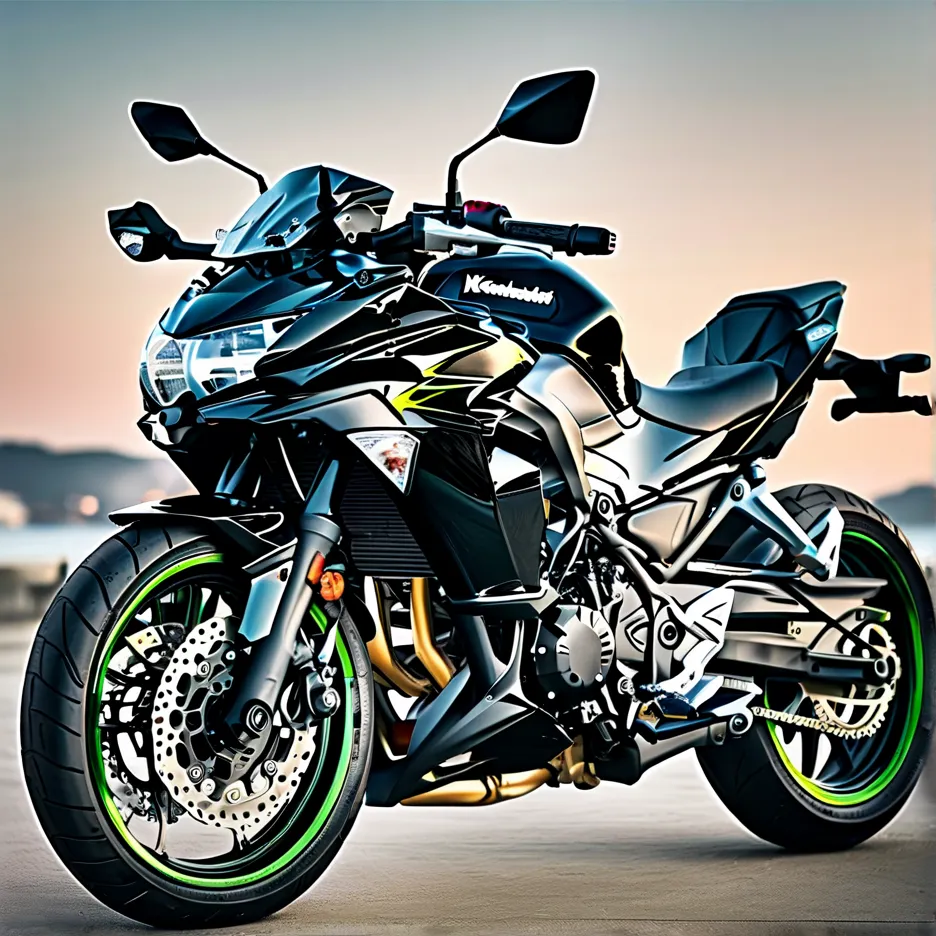For riders seeking the perfect blend of aggressive styling and accessible performance, the Kawasaki Ninja 400 All-Black edition stands out as a top contender in the entry-level sport bike category. Its matte-black finish exudes a stealthy aesthetic, while its 399cc parallel-twin engine delivers responsive power ideal for both city commuting and weekend canyon carving. Whether you’re a new rider or a seasoned enthusiast, maximizing this motorcycle’s potential requires a mix of mechanical know-how and disciplined maintenance. Below, we break down expert-backed strategies to elevate your Ninja 400’s performance and preserve its head-turning appearance.
Performance Upgrades for the Kawasaki Ninja 400 All-Black
While the stock Ninja 400 offers a balanced ride, targeted modifications can unlock noticeable gains:
– ECU Tuning: Reprogramming the engine control unit (ECU) optimizes fuel-air mixtures, smoothing throttle response and eliminating the factory’s restrictive top-speed limiter. Dyno tests by Cycle World show a 6-8% horsepower increase with proper tuning.
– Exhaust System: A lightweight aftermarket slip-on exhaust (like Akrapovič or Yoshimura) reduces weight by up to 4 lbs and enhances mid-range torque. Pair it with a high-flow air filter for synergistic airflow improvements.
– Suspension Adjustments: The stock suspension caters to lighter riders. For aggressive riding, consider adjusting preload settings or upgrading to Öhlins cartridges for sharper cornering stability.
Critical Maintenance Practices for Longevity
Neglecting routine care can diminish performance and resale value. Follow this checklist:
1. Oil Changes: Use Kawasaki’s recommended 10W-40 synthetic oil every 3,000 miles (4,800 km). Contaminated oil accelerates engine wear, particularly in stop-and-go traffic.
2. Chain Maintenance: Clean and lubricate the drive chain every 500 miles using a dedicated chain cleaner (e.g., Motul Chain Clean). Improper tension causes erratic power delivery—maintain 1.2–1.6 inches (30–40 mm) of slack.
3. Cooling System Checks: Inspect coolant levels monthly and flush the system every two years with Kawasaki Eco-Coolant to prevent overheating during prolonged rides.
Protecting the Stealth Matte Finish
The Ninja 400’s all-black aesthetic demands vigilance against UV damage and scratches:
– Washing Technique: Avoid automatic car washes. Handwash weekly using pH-neutral soap (like Chemical Guys Meticulous Matte) and microfiber cloths to prevent swirl marks.
– Paint Protection Film (PPF): Apply a matte-specific PPF to high-impact areas (tank, front fender) to shield against rock chips. Brands like XPEL offer pre-cut kits tailored for the Ninja 400.
– Storage Tips: Park in shaded areas or use a breathable motorcycle cover to minimize sun exposure, which can fade matte finishes faster than gloss.
Riding Tips to Match the Ninja 400’s Capabilities
This bike thrives on precision:
– Body Positioning: Shift your weight forward during hard braking and lean off-saddle in corners to reduce tire slip. The narrow seat design rewards active riding postures.
– Throttle Control: The parallel-twin engine delivers peak torque at 8,000 RPM—practice gradual roll-ons exiting corners to maintain traction.
– Brake Modulation: Upgrade brake pads (EBC HH sintered pads recommended) for firmer lever feedback, especially during downhill descents.
When to Consult a Professional
While DIY maintenance builds familiarity, complex tasks like valve clearance checks (required every 15,000 miles) or ECU flashing should be handled by certified Kawasaki technicians. Authorized service centers use KDS diagnostic tools to ensure software updates align with factory warranties.
The Kawasaki Ninja 400 All-Black balances style and substance effortlessly, but its true potential emerges through meticulous care and strategic upgrades. By prioritizing preventive maintenance and rider skill development, you’ll not only extend the bike’s lifespan but also amplify the thrill of every ride. For validated technical specifications, always cross-reference Kawasaki’s official service manual or consult ASE-certified mechanics specializing in sport bikes.




Leave a Reply